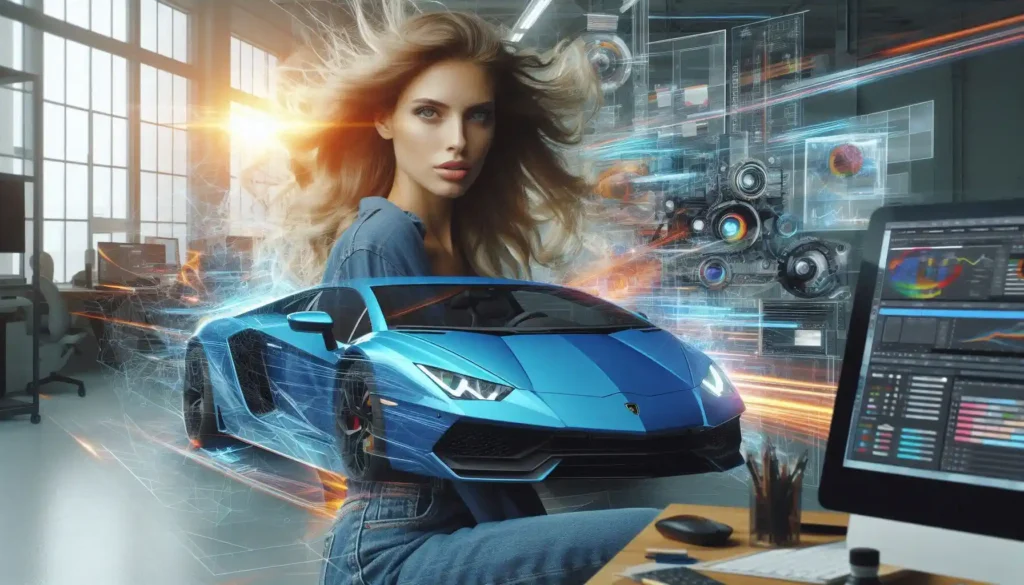Alright, folks, let’s talk about something near and dear to my heart—promo motion videos. You know, those slick, eye-catching, “OMG I need to buy this right now!” videos that make you think you have to get a new toaster because it can toast four slices at once? Yeah, those.

Now, I know what you’re thinking—”Another promo video? Really? I’ve seen a million!” But hold up, hold up, because we’re not just talking about any old promo video. No, no. We’re talking about high-conversion promotional videos. The ones that turn casual window shoppers into full-on cart-stuffing, checkout-clicking legends. And the secret sauce? 2D and 3D motion design. That’s right, my friends. We’re not just moving pixels here; we’re moving people. Emotionally. Spiritually. Financially.
The 2D Wizardry – It’s Flat but Not Boring
First up, 2D motion design. Picture this: You’re scrolling, minding your business, when BAM! A sleek 2D animation smacks you in the face—not literally unless you’re into that. It’s playful, it’s quirky, it’s bouncing around your screen like it’s had one too many energy drinks. But here’s the kicker: it’s telling you a story. And not just any story—the story of why you need this product. A journey to…buy an avocado slicer? Yes. Yes, you are.
2D motion design is the OG of promo videos. It’s the cool, artsy friend who shows up at the party in vintage sneakers, tells you about that indie band before they got famous, and somehow convinces you to buy that ethically sourced, hand-crafted tote bag. It’s simple, it’s effective, and it converts like a dream.
The 3D Powerhouse – Because Flat Is for Quitters
But if 2D is the cool, artsy friend, then 3D motion design is the flashy one who rolls up in a Tesla. It’s like 2D, but on steroids. Everything’s got depth. Everything’s got dimension. You’re not just seeing the product—you’re practically touching it. Suddenly, that blender isn’t just blending—it’s breaking the sound barrier while sending fruit flying through space! You can practically taste the smoothie through the screen.
When done right, 3D motion design gives you an immersive experience. It grabs your attention, spins you around, and doesn’t let go until you’ve smashed that “buy now” button. You know those ads where it feels like you’re walking around the product, zooming in and out like you’re some sort of CSI detective analyzing a crime scene? Yeah, that’s the power of 3D. And once you go 3D, you don’t go back—unless you’ve run out of popcorn and need to hit pause.
High-Conversion Magic – The Ultimate Mic Drop
Now, here’s the thing. It’s not just about making stuff move around and look pretty (although, let’s be honest, that’s a huge part of it). The true power of these promo motion videos—whether they’re 2D, 3D, or some freakish hybrid—is the conversion rate. That’s the magic word. You can have the coolest video in the world, but if it doesn’t make people buy stuff, it’s like trying to sell sunscreen in Antarctica—pointless.
Promo motion videos use the perfect combo of storytelling, visuals, and psychology. They give the viewer just enough dopamine to make them feel good but not so much that they forget why they’re watching in the first place: to make a purchase. And the best part? They work. I mean, who can resist a video that shows them exactly how awesome their life will be once they buy that self-cleaning, voice-activated dog bowl?
Conclusion – 2D, 3D, and a Whole Lot of Conversion
So, whether it’s a sleek 2D animation that pulls on your heartstrings or a mind-blowing 3D experience that makes you question reality, promo motion videos are here to stay—and convert. They take you from “meh” to “I need this in my life” in under 30 seconds. And that, my friends, is the power of motion design. It’s not just art—it’s science. It’s strategy. It’s… money.
And hey, if you’re not already planning your next promo motion video after reading this, then clearly, we need to make another one. Oh wait—was that conversion right there?

